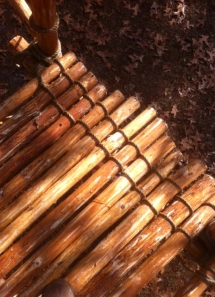Knots and Lashings
Knots and lashings seem to be intimidating and overwhelming to many people. When you get to working with them they are not too hard, and a good handful of knots and lashings can be all most folks need in their “toolkit” to solve most problems in the woods or in other real life situations.
Knots and Hitches
Square Knot-Square Knots are used to join to separate ties or the two ends of the same material. The Square Knot lays flat when tied so it can work well for securing bandages for first aid of srings on packages.
https://youtu.be/eMib8rJfDDs
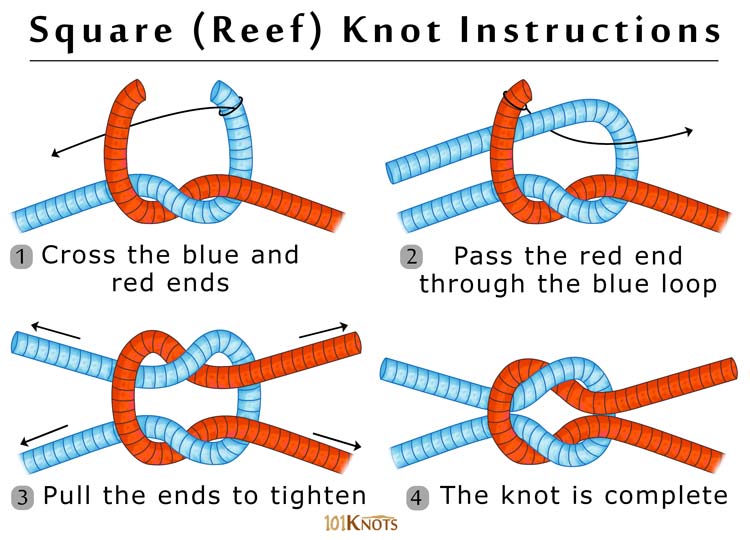
Two Half Hitches-The Two Half Hitches is typically used when tying a rope around a ring, pole, or other anchoring device while something is attached to the other end of the rope that you do not want to get away and fall and be lost.
https://youtu.be/AWmbdbcKLXU

Taught Line Hitch– The Taught Line Hitch is a sliding knot. It ties the rope with a loop on the end that can get bigger or smaller so that it can stay “taught”. It is frequently attached to tent or fly stakes to keep the appropriate amount of pressure on the line.
https://youtu.be/0Hg4d8RDLzI

Bowline– The Bowline creates a loop that will not slip or move it is known as the “Rescue Knot”. The Bowline can also be tied on a “bight” which is when a section of rope is folded in half. A Bowline on a bight creates two loops that can be used as leg loops in an improvised harness.


Sheepshank– The Sheepshank is a knot used to shorten a length or rope when what you have is much too long for what you need, but do not want to cut the rope so you can have the full length for later.
https://youtu.be/A8JroRgsjF4

Clove Hitch– The Clove Hitch will secure a rope around a pole or spar. The harder you pull on the Clove Hitch the tighter it gets. This is used for tying lashings.
https://youtu.be/AmXKiRneUig

Timber Hitch– The Timber Hitch is used to secure a rope to an item, typically a large or heavy item so that it can be drug to different places. It is also the beginning of the Diagonal Lashing.
https://youtu.be/11BpfkpX17w

Sheet Bend– The Sheet Bend is used to combine two pieces of rope or cordage together. Tying two ropes together can be done with other knots, but the Sheet Bend was specifically designed for this and is extremely effective at tying ropes of two different sizes, something other knots do not do effectively.
https://youtu.be/FIRJqAgWXoI
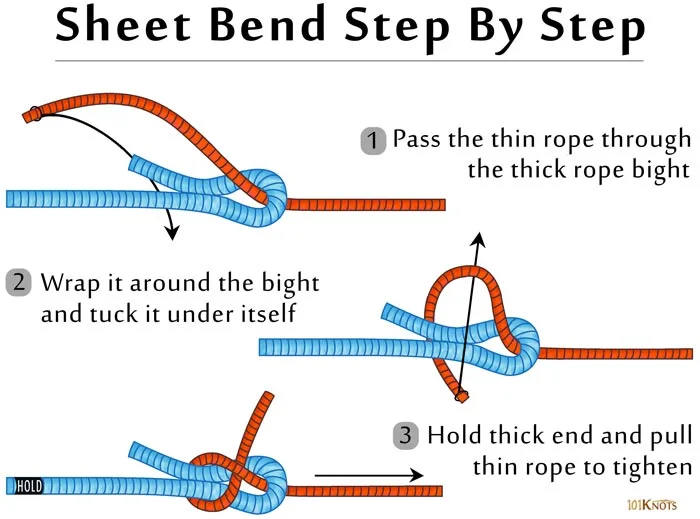
Lashings
Square Lashing– The Square Lashing is used to combine poles or spars together. This lashing works best when those poles or spars are joined in 90 degree angles.
https://youtu.be/ivESrxTaMV8



Diagonal Lashing– The Diagonal Lashing is used to create a crossing of two spares or poles that do not meet at 90 degrees.
https://youtu.be/aOUE5SDE9UQ


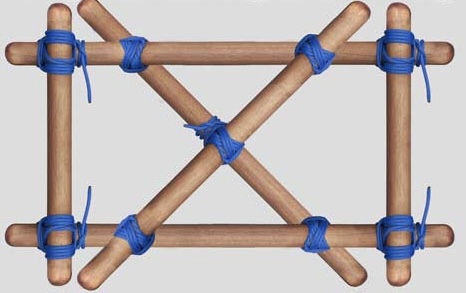
Shear Lashing– The Shear Lashing is tied with two spars of poles side by side but allows them to separate, typically forming an A-frame.
https://youtu.be/5sAAdBJ6igw
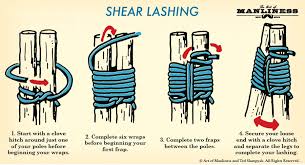


Round Lashing– The Round Lashing is used to connect two spars or poles. The difference between this and the shear lashing is a Round Lashing keeps the spars parallel to each other.
https://youtu.be/931uD5HVhxE


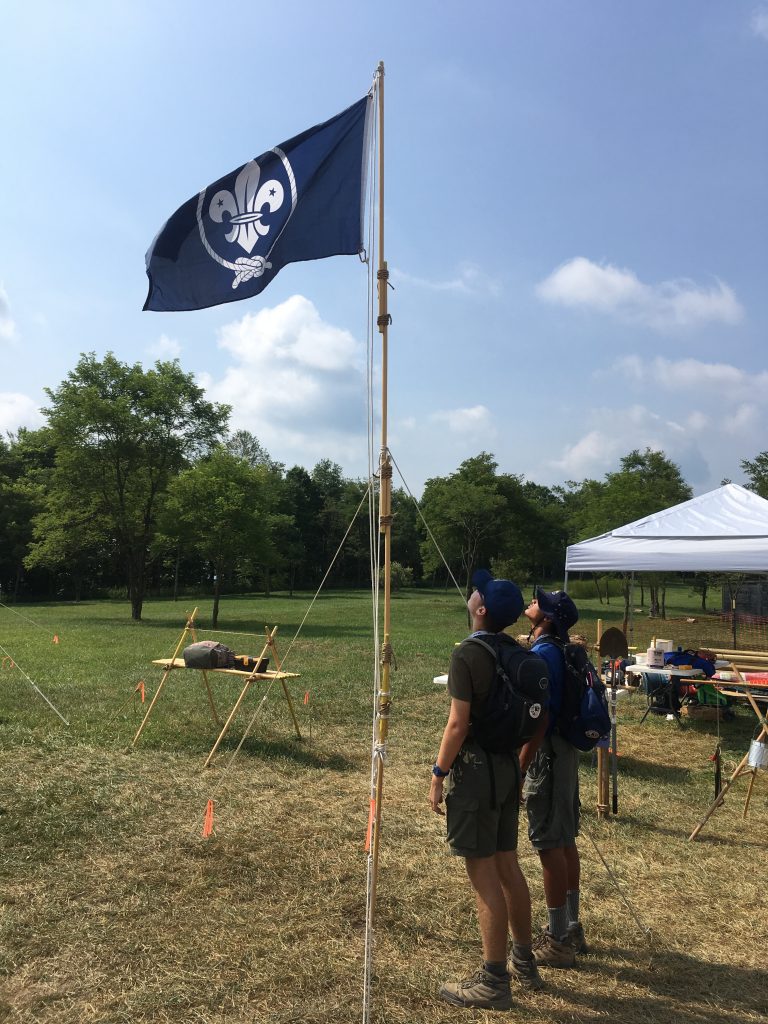
Tripod Lashing– The Tripod Lashing is used to combine three spars or poles. When opened up this will ultimately create a triangular pyramid. Tripod Lashings are some times used to hang things beneath them or as sturdy bases for other projects.
https://youtu.be/nY33xwIz3KY
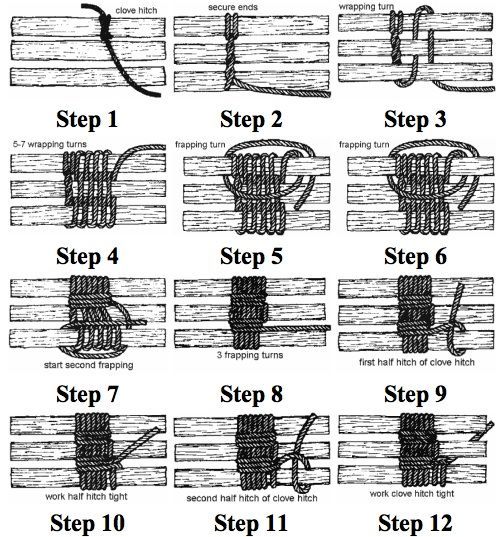


Raft Lashing/Floor Lashing- The Raft or Floor lashing is used to secure a row of sticks, pools, spars, etc. to a perpendicular support piece. This can be used to make a raft, bench, table, cot, platform, or other flat surface.
https://youtu.be/NmwnGBfAwK8

